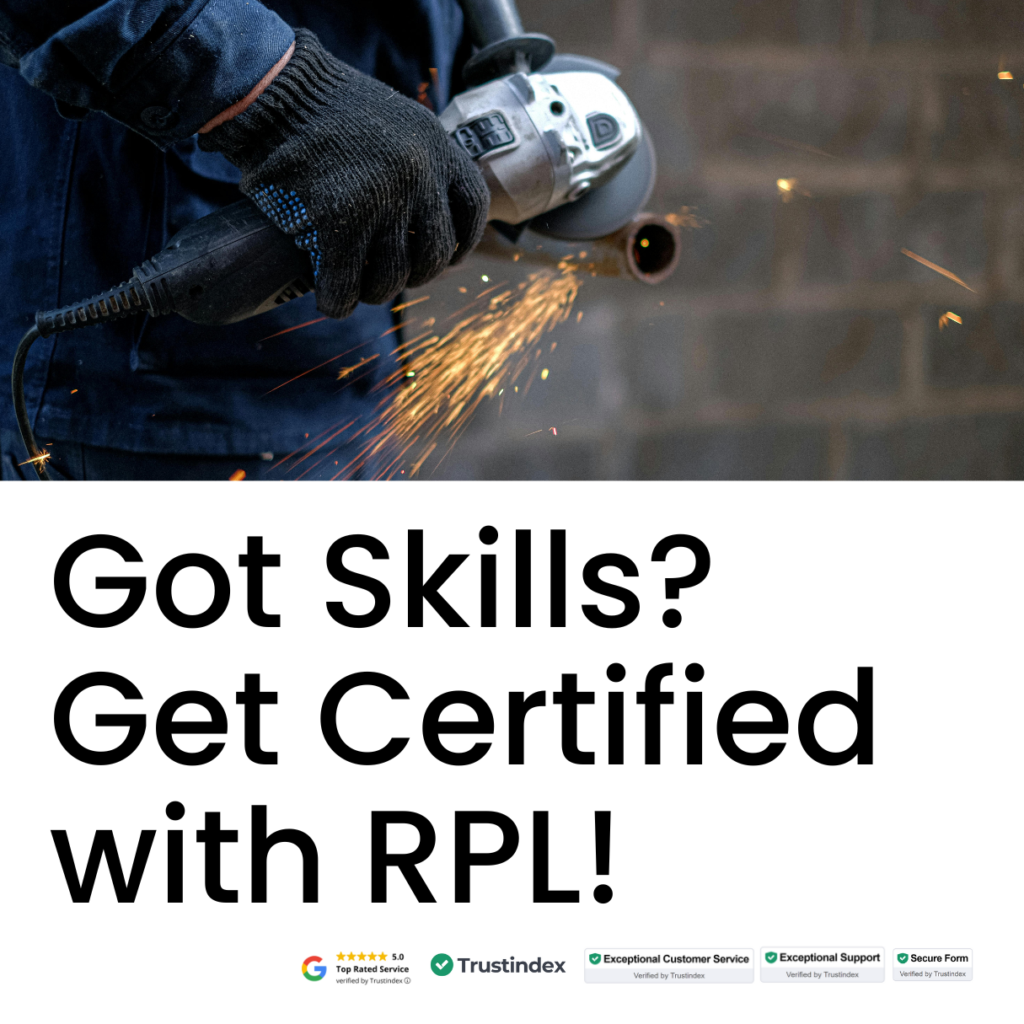When applying for Recognition of Prior Learning (RPL), submitting the right evidence is crucial to validating your skills, work experience, and knowledge. Understanding the types of evidence required and adhering to the rules for submission can significantly enhance your chances of success. In this blog, we’ll explore the types of RPL evidence and the rules of evidence that ensure your application is comprehensive and meets the standards needed for RPL assessment.
What Is RPL and Why Is Evidence Important?
Recognition of Prior Learning (RPL) is a process that allows you to gain formal qualifications based on your prior work experience, skills, and knowledge. Instead of attending traditional classroom training, RPL evaluates your practical experience against the level of competency required for the qualification you’re applying for. The evidence you submit demonstrates your competence and is the key factor in the RPL assessment process.
The quality, relevance, and clarity of your evidence will directly impact the success of your application. Understanding the types of evidence you need to submit and the rules for how to submit them is essential for a smooth and successful RPL process.
Types of Evidence for RPL
There are three primary types of evidence required for RPL: Direct Evidence, Indirect Evidence, and Supplementary Evidence. Each type of evidence plays a distinct role in demonstrating your competencies.
1. Direct Evidence
Direct evidence refers to tangible, concrete examples of your work or achievements that directly demonstrate your skills and abilities. This type of evidence is most persuasive because it provides clear, firsthand proof of your competence.
Examples of Direct Evidence:
- Work samples (e.g., reports, designs, presentations)
- Completed projects (e.g., a project plan, product created, or service delivered)
- Photographs or videos of you performing relevant tasks in the workplace
Direct evidence is the strongest form of evidence for RPL because it directly links your actions to the competencies being assessed.
2. Indirect Evidence
Indirect evidence supports your direct evidence by providing additional context or background information. While it may not directly demonstrate your competencies, it helps establish a fuller picture of your qualifications and experience.
Examples of Indirect Evidence:
- Third-party reports or testimonials (e.g., employer references, supervisor statements)
- Job descriptions or performance appraisals
- Records of training, workshops, or courses completed
Indirect evidence helps validate your competencies and fills in any gaps by showing how your work or experience aligns with the required skills.
3. Supplementary Evidence
Supplementary evidence is used to back up or enhance your direct and indirect evidence. While it may not be directly related to the competencies you’re applying for, it helps provide additional proof of your skills, qualifications, or experience in the relevant field.
Examples of Supplementary Evidence:
- Certificates of previous training or courses (including non-formal training)
- Awards or recognition for your work
- Personal reflections or written statements that explain your experience and learning process
Supplementary evidence adds depth to your RPL application by demonstrating your commitment to learning and professional development.
Rules of Evidence
When submitting evidence for RPL, it must meet certain rules of evidence to ensure that it is valid and accepted. These rules ensure the integrity and reliability of your submission, helping assessors evaluate your application fairly and accurately.
1. Sufficient Evidence
Sufficient evidence means you have provided enough documentation to fully demonstrate your competencies. Each competency you’re applying for must be backed by adequate evidence that clearly shows your skills and knowledge. Inadequate or incomplete evidence may delay the assessment or result in rejection.
Tip: Ensure that your evidence covers all the required competencies and that there is enough information for the assessor to make an informed decision.
2. Authentic Evidence
Authentic evidence is evidence that is genuine and originates from reliable sources. It must be original or certified copies of official documents, such as your work samples, qualifications, and third-party reports.
Tip: Ensure that the evidence you submit comes directly from reliable sources, such as your employer, training provider, or other professionals who can confirm your skills.
3. Reliable Evidence
Reliable evidence is consistent and trustworthy. It should come from credible sources and be free from errors or inconsistencies. Your evidence should be written, and if possible, corroborated by other supporting documentation.
Tip: Double-check that all your documents are accurate and that there are no discrepancies in the information provided.
4. Current Evidence
Current evidence reflects your up-to-date skills and knowledge. While previous experience is valuable, your evidence should show that your competencies are still relevant in today’s context. Submitting evidence that is outdated or no longer applicable could undermine the validity of your application.
Tip: Provide the most recent evidence available, and ensure that the skills and knowledge shown are still applicable to the qualification you’re seeking.
Tips to Submit Your RPL Evidence:
Remember, the clearer and better organised your portfolio is, the easier it will be for the assessor to verify your skills and competencies. Keep everything neat and well-explained, making it simple for them to assess your portfolio.
1. Organise and Label Evidence
Ensure your evidence portfolio is easy to navigate. Each piece of evidence should be clearly labelled, and you should provide brief explanations of how each document relates to the competencies required for the qualification. A well-organised portfolio will help assessors quickly understand how your skills meet the qualification standards.
2. Use the STUDYIN Document Checklist:
To make sure you’re covering all the necessary steps, use the STUDYIN Document Checklist. We provide a tailored checklist for every qualification, helping you gather and organise all the required evidence for your RPL application. This checklist ensures that you don’t miss any important documents, setting you up for success from the start.
3. Provide Context:
Include brief descriptions or explanations for each piece of evidence, especially if it’s not immediately clear how it relates to the competencies.
4. Submit Clear, Legible Copies:
Make sure all scanned documents are clear and legible. If you’re submitting photos or videos, ensure they are of high quality and easy to view.
Once your application form and portfolio are ready, we will do a preliminary review of your documents to verify that your experience matches the qualification you’re seeking before submitting them to the RTO. The RTO will assign an assessor to your case to conduct a comprehensive review of your work portfolio. This step is crucial for ensuring that all your submitted materials are correctly evaluated.
Final Thoughts:
Submitting the right evidence is critical to the success of your RPL application. By taking the time to carefully curate, organise, and explain your evidence, you’re setting yourself up for more than just a qualification—you’re opening the door to new career opportunities. Focus on quality and clarity, and your efforts will be reflected in the outcome.
Ready to Begin Your RPL Journey?
At STUDY IN Pty Ltd, we help individuals gain nationally recognised qualifications through Recognition of Prior Learning (RPL). If you’re unsure where to begin, take our Free 40-Second RPL Skill Assessment to find out which qualifications align with your skills and experience.
Start your RPL application today and take the next step in advancing your career! Visit our RPL Page to learn more about how RPL can help you gain the recognition you deserve.
All qualifications are awarded by our trusted partner RTOs.









